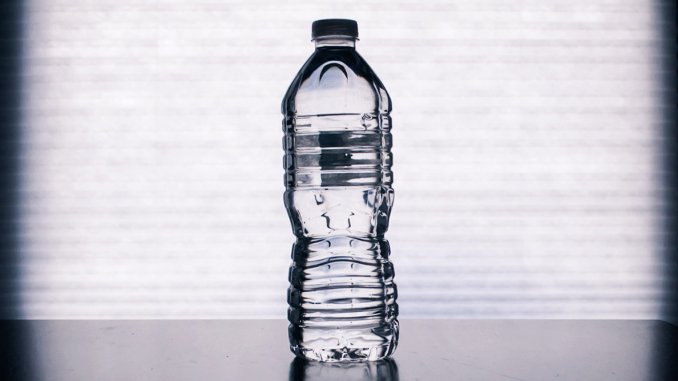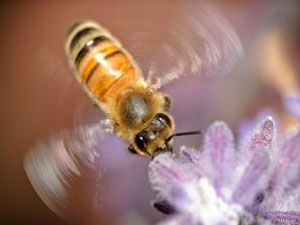《Nature》目录要览:2010-03-04出版
时间:2010-03-05 阅读: 我要评论:
《Nature》目录要览:2010-03-04出版
封面故事:人肠道微生物的基因目录
A human gut microbial gene catalogue established by metagenomic sequencing
人体是大约100万亿微生物细胞的宿主,其中大部分在肠道中,在那里它们对人的生理
和营养都有深远影响,而且现在还被认为对人的生命非常关键。肠道微生物帮助人从食
物中摄取能量,肠道微生物群落的变化还可能与肠道疾病或肥胖症有关。现在,一个国
际合作课题组(该课题组是“人类小肠元基因组学”项目的构成部分,该项目简称为
MetaHIT)发表了从丹麦和西班牙124位健康的、超重的和肥胖的成年人以及炎症患者提
取的人肠道微生物菌落的一个基因目录。所获数据为了解这一基因组(比人类基因组大
150倍)提供了第一手资料,并且表明这些基因大部分是在不同个体之间共享的。根据
由这些基因所编码的各种不同功能,研究人员就有可能来确定最小的肠道元基因组和最
小的肠道细菌基因组。(Article p. 59)
未来量子计算机将采用什么技术(Quantum computing kit)
Quantum computers
由于具有由量子力学的奇异现象主导的基本信息处理单元(量子位),所以量子计算机
具有以远远好于今天利用传统“位”的计算机的性能来处理某些计算的潜力。尽管如
此,实用量子计算机(如果它们能够问世的话和当它们问世之后)将采用什么技术还远
不清楚。在一篇内容非常广泛的综述文章中,来自该领域主要实验室的六位研究人员介
绍了有关量子信息系统硬件的最新工作。他们对当前所采用的材料(包括掺杂硅中供体
原子的核自旋、砷化镓中的电子自旋以及金刚石中的氮空缺中心)进行了比较,并对尚
未问世的材料进行了猜测。(Review p. 45)
酵母的古老基因变异(Ancient genetic variants)
Remarkably ancient balanced polymorphisms in a multi-locus gene network
一种以前人们不知道的基因变异已在有关芽殖酵母(酿酒酵母的一个近亲)的一项研究
中被发现。半乳糖(GAL)利用基因网络的关键特征在大多数酵母物种中都保留了下
来,但芽殖酵母这个种没有功能性GAL基因,不能将半乳糖作为碳的一个来源来利用。
这项新的研究关注从日本分离得到的不能利用半乳糖的芽殖酵母与能够利用这种糖的葡
萄牙分离菌种之间的差别。基因组分析显示,日本菌种中有高度退化的、非功能性GAL
假基因,而葡萄牙菌种则有功能性GAL基因。这两种不同状态(被称为“均衡的、未关
联的基因网络”,简称BuGNP)似乎有一个古老起源,共存于芽殖酵母作为一个种存在
的整个历史中。(Article p. 54)
蚊子的气味受体蛋白(Mosquito’s scent picking)
Odorant reception in the malaria mosquito Anopheles gambiae
气味识别被疾病的很多昆虫传播媒介用来定位其宿主,它们是通过我们在很大程度上还
不知道的分子过程来做到这一点的。现在,研究人员利用基因工程果蝇的“空神经元”
体系已确定了“冈比亚按蚊”(撒哈拉以南非洲的主要疟疾传播媒介)全部气味受体蛋
白。这些受体大部分都具有广泛活性,能对一系列不同气味做出反应,但少数却比较有
针对性,只对一种或少数几种气味做出反应。几十种受体对人汗液中的化合物有强烈反
应,因此该发现为控制疟疾提供了可能的目标:人们可以破坏蚊子的宿主探测功能或用
假气味将它们赶到捕蚊器中。(Article p. 66; News & Views)
银河系的构造单元(Galactic building blocks)
Linking dwarf galaxies to halo building blocks with the most metal-poor star
in Sculptor
去年研究人员发现Sculptor矮星系中有一颗极为缺乏金属的恒星,该发现向一个流行的
观点(该观点所依据的是,大多数缺金属的恒星在当今的矮星系中都明显不存在)提出
了质疑:人们早就知道的、绕银河系运转的经典矮卫星星系可能是银河系的构造单元。
对该恒星(编号为S1020549)所做新的观测表明,它具有缺金属的“晕型”恒星典型的
11种元素的光谱丰度模式。这说明,几十亿年前被毁掉而形成银河系晕的体系与当今矮
星系的前身从根本上来讲并没有任何不同。(Letter p. 72)
新发现的高温有机超导体(Superconductors go organic)
Superconductivity in alkali-metal-doped picene
新的高温超导体在继续出现(值得注意的最新发现是砷化铁),但过去十年一直没有发
现新的有机超导体。现在,研究人员在高达18 K的温度下在用钾或铷掺杂的一种简单的
烃分子的晶体中发现了超导性。该新化合物的基础是“二萘品苯” (C22H14),它是一
种由5个苯环组成的分子,这些苯环彼此共享边缘。该分子结晶形成一种有序的分子固
体。碱金属向晶格中的插入,在正常情况下使一种半导体材料的体系中诱导产生金属行
为和超导性。钾掺杂的“二萘品苯”中18 K的转变温度对于一种有机超导体来说是很高
的,只有碱金属掺杂的C60有更高的转变温度。而且,由于“二萘品苯”是基于融合苯
环的一大家族分子中的一个,所以其他超导烃也许正在等待被发现。(Letter p. 76;
News & Views)
固氮“藻青菌”UCYN-A基因组完成测序(A lean, mean microbe)
Metabolic streamlining in an open-ocean nitrogen-fixing cyanobacterium
被称为UCYN-A的迄今尚未培养出的固氮“藻青菌”广泛分布在世界海洋中。元基因组分
析表明,它没有为光合机构中产生氧气的光合体系II复合物(该复合物帮助它在日光下
固氮)编码的基因,也没有固碳基因。现在,利用大规模并行配对端焦磷酸测序技术,
研究人员确定了完整的UCYN-A基因组。原来,它是一种特别简单的生物,缺少很多核心
代谢通道,严重依赖于其他生物获取有机碳、甚或有机含氮化合物。虽然该基因组与叶
绿体和内共生体在结构上有相似性,但对自然种群所做的实验迄今未能发现与其他微生
物的任何共生关系。(Letter p. 90)
早期“西里龙”是食草动物(An early herbivorous silesaur)
Ecologically distinct dinosaurian sister group shows early diversification
of Ornithodira
“西里龙”(恐龙的一个近亲)的一个新属和新种的一个近乎完整的骨架的发现,将三
叠纪中期爬行动物化石记录中一些松散环节联系了起来。新发现的种是“鸟颈类主龙”
(Ornithodira)已知最早的成员之一,这个鸟类分支还包括恐龙和飞龙,其生活年代
可以追溯到两大“祖龙”类别“鸟颈类”和“鳄鱼类”分化后不久。齿系和其他特征表
明,“西里龙”并不像人们可能预料的那样是两条腿的食肉动物,而是体型更大的食草
动物。但其真正的意义在于年代早,这表明,我们对恐龙和飞龙演化的最早阶段仍然知
之甚少。(Letter p. 95)
Hox基因改变与形态多样性(Hox genes key to diversity)
Changes in Hox genes’ structure and function during the evolution of the
squamate body plan
Hox基因在所有动物沿身体轴线的结构分化中都扮演一个中心角色,该基因表达模式的
改变与脊椎动物身体构造的多样化并行。对有鳞爬行类(蜥蜴和蛇)Hox基因的组织所
做的一项研究表明,Hox基因簇出人意料地积累了可转座的元素,反映了编码和非编码
调控区域中广泛的基因组重排。对表现出不同中轴骨架的两个物种(玉米蛇和鞭尾蜥)
所做的比较表达分析显示,Hox13 和 Hox10的表达有很大改变,与发育中的蛇胚胎的尾
部区域和胸部区域的扩张巧合。因此,Hox基因簇结构和功能的改变可能反映了在这一
类群中所观察到的广泛的形态辐射。(Letter p. 99)
线粒体DAMPs与创伤性败血症(Mitochondrial revolt/ Rising DAMPs)
Circulating mitochondrial DAMPs cause inflammatory responses to injury
线粒体是细菌的内共生后代,在经过数百万年共同演化之后,它们现在所服务的真核细
胞对其非常容忍。但在危机关头,它们之间的关系似乎会紧张。用曾遭受严重创伤的患
者的血浆样品所做试验表明,线粒体DAMPs(即“与损伤相关的分子模式”简称)因组
织损伤而被释放到循环系统中,在那里它们通过特定甲酰肽受体激发嗜中性白血球(或
称嗜中性粒细胞)。这会触发系统炎症、组织损伤和明显的败血症。这些与受体相互作
用的DAMPs,是针对被称为PAMPs(即“与病原体相关的分子模式”简称)、表达在入侵
微生物上、引起细菌性败血症的分子的先天免疫反应的构成部分。这一发现似乎可解释
有时即便在没有发生感染的情况下也会发生的与严重创伤相关的明显败血症。(Letter
p. 104; News & Views)
----------------------
NEWS AND VIEWS
----------------------
Behavioural neurobiology: The treacherous scent of a human pp37-38
Mosquitoes' odorant receptors help the insects to find humans and,
inadvertently, to transmit malaria. The identification of the odorants
that bind to these receptors opens up ways of reducing mosquito biting.
Walter S. Leal
doi:10.1038/464037a
http://www.nature.com/nature/journal/v464/n7285/full/464037a.html
Microscopy: When mica and water meet pp38-39
A neat mode of operation of the atomic force microscope has been used to
probe the interface between mica and water. The results help to settle a
long-standing debate about the nature of this interface.
Joost W. M. Frenken and Tjerk H. Oosterkamp
doi:10.1038/464038a
http://www.nature.com/nature/journal/v464/n7285/full/464038a.html
50 & 100 years ago p39
doi:10.1038/464039b
http://www.nature.com/nature/journal/v464/n7285/full/464039b.html
Materials science: Hydrocarbon superconductors pp39-41
Superconductivity has been discovered in the materials that form when
alkali metals react with a solid hydrocarbon. This is the first new class
of organic, high-temperature superconductor in a decade.
Matthew J. Rosseinsky and Kosmas Prassides
doi:10.1038/464039a
http://www.nature.com/nature/journal/v464/n7285/full/464039a.html
Clinical immunology: Culprits with evolutionary ties pp41-42
The cellular organelles we know as mitochondria are thought to have
originated as symbiotic bacteria. Indeed, the two use common mechanisms
to trigger innate immune responses to injury and infection, respectively.
Carolyn S. Calfee and Michael A. Matthay
doi:10.1038/464041a
http://www.nature.com/nature/journal/v464/n7285/full/464041a.html
Materials science: Mind the helical crack pp42-43
Catastrophic breakage of brittle materials such as ceramics is usually
triggered by the rapid spreading of cracks. Computer simulations have
now cracked the three-dimensional details of this process.
Markus J. Buehler and Zhiping Xu
doi:10.1038/464042a
http://www.nature.com/nature/journal/v464/n7285/full/464042a.html
Developmental genetics: Time for teeth p43
Sadaf Shadan
doi:10.1038/464043a
http://www.nature.com/nature/journal/v464/n7285/full/464043a.html
Obituary: Marshall Nirenberg (1927-2010) p44
A humble, gentle and visionary giant of molecular biology.
C. Thomas Caskey
doi:10.1038/464044a
http://www.nature.com/nature/journal/v464/n7285/full/464044a.html
----------------------
REVIEW
----------------------
Quantum computers pp45-53
T. D. Ladd et al.
doi:10.1038/nature08812
Abstract:
http://www.nature.com/nature/journal/v464/n7285/abs/nature08812.html
Article:
http://www.nature.com/nature/journal/v464/n7285/full/nature08812.html
----------------------
ARTICLES
----------------------
Remarkably ancient balanced polymorphisms in a multi-locus gene network
pp54-58
Local adaptations are often governed by several interacting genes scattered
throughout the genome. Here a novel type of multi locus genetic variation
is described that has been maintained within a species over a vast period
of time. A balanced unlinked gene network polymorphism is dissected that
involves galactose utilization in a close relative of baker's yeast.
Chris Todd Hittinger et al.
doi:10.1038/nature08791
Abstract:
http://www.nature.com/nature/journal/v464/n7285/abs/nature08791.html
Article:
http://www.nature.com/nature/journal/v464/n7285/full/nature08791.html
A human gut microbial gene catalogue established by metagenomic sequencing
pp59-65
Deep metagenomic sequencing and characterization of the human gut microbiome
from healthy and obese individuals, as well as those suffering from
inflammatory
bowel disease, provide the first insights into this gene set and how much of
it is shared among individuals. The minimal gut metagenome as well as the
minimal gut bacterial genome is also described.
Junjie Qin et al.
doi:10.1038/nature08821
Abstract:
http://www.nature.com/nature/journal/v464/n7285/abs/nature08821.html
Article:
http://www.nature.com/nature/journal/v464/n7285/full/nature08821.html
Odorant reception in the malaria mosquito Anopheles gambiae pp66-71
Insect vectors of diseases locate their animal hosts through olfaction via
largely unknown molecular processes. Here the 'empty neuron' system of
genetically engineered Drosophila is used to assign specific odorants to the
entire repertoire of olfactory receptors of the malaria vector Anopheles
gambiae. The results illuminate ecological and neurobiological differences
between mosquitoes and fruitflies and provide new potential molecular
targets
to boost the struggle against insect borne diseases.
Allison F. Carey et al.
doi:10.1038/nature08834
Abstract:
http://www.nature.com/nature/journal/v464/n7285/abs/nature08834.html
Article:
http://www.nature.com/nature/journal/v464/n7285/full/nature08834.html
----------------------
LETTERS
----------------------
Linking dwarf galaxies to halo building blocks with the most metal-poor star
in Sculptor pp72-75
Current models indicate that the Milky Way's stellar halo was assembled from
many smaller systems, and recent studies claimed that the true Galactic
building blocks must have been vastly different from the surviving dwarfs.
But the overall abundance pattern of elements in S1020549, the most
iron-poor
star in the Sculptor dwarf galaxies, is now found to follow that seen in
low-metallicity halo stars, indicating that the systems destroyed to form
the halo billions of years ago were not fundamentally different from the
progenitors of present-day dwarfs.
Anna Frebel, Evan N. Kirby and Joshua D. Simon
doi:10.1038/nature08772
Abstract:
http://www.nature.com/nature/journal/v464/n7285/abs/nature08772.html
Article:
http://www.nature.com/nature/journal/v464/n7285/full/nature08772.html
Superconductivity in alkali-metal-doped picene pp76-79
The phenomenon of superconductivity continues to intrigue, and several new
superconducting materials have been discovered in recent years - but
in the case of organic superconductors, no new material system with a high
superconducting transition temperature has been identified in the past
decade.
Now it has been shown that the introduction of potassium into crystals of
organic molecule picene can yield superconductivity at temperatures as high
as 18 K.
Ryoji Mitsuhashi et al.
doi:10.1038/nature08859
Abstract:
http://www.nature.com/nature/journal/v464/n7285/abs/nature08859.html
Article:
http://www.nature.com/nature/journal/v464/n7285/full/nature08859.html
Reinventing germanium avalanche photodetector for nanophotonic on-chip
optical interconnects pp80-84
To integrate microchips with optical communications a photodetector is
required to mediate the optical and electronic signals. Although germanium
photodetectors are compatible with silicon their performance is impaired by
poor intrinsic noise. Here the noise is reduced by nanometre engineering of
optical and electrical fields to produce a compact and efficient
photodetector.
Solomon Assefa, Fengnian Xia and Yurii A. Vlasov
doi:10.1038/nature08813
Abstract:
http://www.nature.com/nature/journal/v464/n7285/abs/nature08813.html
Article:
http://www.nature.com/nature/journal/v464/n7285/full/nature08813.html
Helical crack-front instability in mixed-mode fracture pp85-89
The addition of shear orthogonal to the tension-loading plane of crack
propagation generates an instability that results in three-dimensional
helical
crack propagation, atomically rough surfaces and a fracture pattern
resembling
a series of lance shapes. Here numerical simulations reveal a new law that
governs crack propagation in space for materials subject to general stress
conditions.
Antonio J. Pons and Alain Karma
doi:10.1038/nature08862
Abstract:
http://www.nature.com/nature/journal/v464/n7285/abs/nature08862.html
Article:
http://www.nature.com/nature/journal/v464/n7285/full/nature08862.html
Metabolic streamlining in an open-ocean nitrogen-fixing
cyanobacterium pp90-94
UCYN A is a recently discovered nitrogen-fixing cyanobacterium with unusual
metabolic features. The complete genome of this uncultivated organism is now
presented, revealing a photofermentative metabolism and dependency on other
organisms for essential compounds.
H. James Tripp et al.
doi:10.1038/nature08786
Abstract:
http://www.nature.com/nature/journal/v464/n7285/abs/nature08786.html
Article:
http://www.nature.com/nature/journal/v464/n7285/full/nature08786.html
Ecologically distinct dinosaurian sister group shows early diversification
of
Ornithodira pp95-98
A new genus and species is described from fragmentary remains of a reptile
from the mid Triassic of Tanzania. The finding clarifies the relationships
among the silesaurs. It is among the earliest known ornithodirans (dinosaurs
plus pterosaurs), and demonstrates that silesaurs were not two-legged
carnivores,
as expected, but larger and more herbivorous. Furthermore, the find shows
that
we still know very little about the earliest stages of dinosaur and
pterosaur evolution.
Sterling J. Nesbitt et al.
doi:10.1038/nature08718
Abstract:
http://www.nature.com/nature/journal/v464/n7285/abs/nature08718.html
Article:
http://www.nature.com/nature/journal/v464/n7285/full/nature08718.html
Changes in Hox genes/' structure and function during the evolution of the
squamate body plan pp99-103
The organization of Hox clusters in several different reptiles is
investigated,
showing that the Hox clusters in squamates - lizards and snakes - have
unexpectedly accumulated transposable elements, reflecting extensive genomic
rearrangements of coding and non coding regulatory regions. Comparative
expression analyses between two species showing different axial skeletons,
the corn snake and the whiptail lizard, revealed major alterations in Hox13
and Hox10 expression features during snake somitogenesis, in line with the
expansion of both caudal and thoracic regions.
Nicolas Di-Poi et al.
doi:10.1038/nature08789
Abstract:
http://www.nature.com/nature/journal/v464/n7285/abs/nature08789.html
Article:
http://www.nature.com/nature/journal/v464/n7285/full/nature08789.html
Circulating mitochondrial DAMPs cause inflammatory responses to
injury pp104-107
Severe trauma can lead to death and sepsis in the absence of apparent
infection.
Here evidence shows that mitochondrial debris, released from damaged cells,
is present in the circulation of seriously injured trauma patients. Such
debris is shown to activate neutrophils via specific formyl peptide
receptors,
triggering systemic inflammation and end organ injury.
Qin Zhang et al.
doi:10.1038/nature08780
Abstract:
http://www.nature.com/nature/journal/v464/n7285/abs/nature08780.html
Article:
http://www.nature.com/nature/journal/v464/n7285/full/nature08780.html
Haematopoietic stem cells derive directly from aortic endothelium during
development pp108-111
One of two papers showing the generation of haematopoietic stem cells (HSCs)
from the ventral wall of the dorsal aorta in live zebrafish embryos. Here,
combined fluorescent reporter transgenes, confocal time-lapse microscopy and
flow cytometry identify and isolate the stepwise intermediates as aortic
haemogenic endothelium transitions to nascent HSCs. HSCs generated from this
haemogenic endothelium are the lineal founders of virtually all of the adult
haematopoietic system.
Julien Y. Bertrand et al.
doi:10.1038/nature08738
Abstract:
http://www.nature.com/nature/journal/v464/n7285/abs/nature08738.html
Article:
http://www.nature.com/nature/journal/v464/n7285/full/nature08738.html
Blood stem cells emerge from aortic endothelium by a novel type of cell
transition pp112-115
One of two papers showing the generation of haematopoietic stem cells (HSCs)
from the ventral wall of the dorsal aorta in live zebrafish embryos. Here,
using imaging of live zebrafish, HSCs are shown to emerge directly from the
aorta floor. This process does not involve cell division but movement of
single endothelial cells out of the aorta ventral wall into the sub aortic
space, where they transform into haematopoietic cells.
Karima Kissa and Philippe Herbomel
doi:10.1038/nature08761
Abstract:
http://www.nature.com/nature/journal/v464/n7285/abs/nature08761.html
Article:
http://www.nature.com/nature/journal/v464/n7285/full/nature08761.html
In vivo imaging of haematopoietic cells emerging from the mouse aortic
endothelium pp116-120
De novo emergence of phenotypically defined haematopoietic stem cells
(Sca1+, c kit+, CD41+) directly from ventral aortic haemogenic endothelial
cells is shown in mice. Although the study did not visualize live embryos,
it
instead developed a dissection procedure to visualize the deeply located
aorta.
Jean-Charles Boisset et al.
doi:10.1038/nature08764
Abstract:
http://www.nature.com/nature/journal/v464/n7285/abs/nature08764.html
Article:
http://www.nature.com/nature/journal/v464/n7285/full/nature08764.html
SIRT3 regulates mitochondrial fatty-acid oxidation by reversible enzyme
deacetylation pp121-125
During fasting SIRT3 is induced in liver and brown adipose tissue. One of
SIRT3's
substrates is shown to be long chain acyl co-enzyme A dehydrogenase (LCAD).
Without SIRT3 LCAD becomes hyperacetylated, which diminishes its activity,
and
reduces fatty acid oxidation. Mice without SIRT3 have all the hallmarks of
fatty acid oxidation disorders during fasting, including reduced ATP levels
and intolerance to cold. Thus, acetylation is a novel regulatory mechanism
for fatty acid oxidation.
Matthew D. Hirschey et al.
doi:10.1038/nature08778
Abstract:
http://www.nature.com/nature/journal/v464/n7285/abs/nature08778.html
Article:
http://www.nature.com/nature/journal/v464/n7285/full/nature08778.html
A human gut microbial gene catalogue established by metagenomic sequencing
人体是大约100万亿微生物细胞的宿主,其中大部分在肠道中,在那里它们对人的生理
和营养都有深远影响,而且现在还被认为对人的生命非常关键。肠道微生物帮助人从食
物中摄取能量,肠道微生物群落的变化还可能与肠道疾病或肥胖症有关。现在,一个国
际合作课题组(该课题组是“人类小肠元基因组学”项目的构成部分,该项目简称为
MetaHIT)发表了从丹麦和西班牙124位健康的、超重的和肥胖的成年人以及炎症患者提
取的人肠道微生物菌落的一个基因目录。所获数据为了解这一基因组(比人类基因组大
150倍)提供了第一手资料,并且表明这些基因大部分是在不同个体之间共享的。根据
由这些基因所编码的各种不同功能,研究人员就有可能来确定最小的肠道元基因组和最
小的肠道细菌基因组。(Article p. 59)
未来量子计算机将采用什么技术(Quantum computing kit)
Quantum computers
由于具有由量子力学的奇异现象主导的基本信息处理单元(量子位),所以量子计算机
具有以远远好于今天利用传统“位”的计算机的性能来处理某些计算的潜力。尽管如
此,实用量子计算机(如果它们能够问世的话和当它们问世之后)将采用什么技术还远
不清楚。在一篇内容非常广泛的综述文章中,来自该领域主要实验室的六位研究人员介
绍了有关量子信息系统硬件的最新工作。他们对当前所采用的材料(包括掺杂硅中供体
原子的核自旋、砷化镓中的电子自旋以及金刚石中的氮空缺中心)进行了比较,并对尚
未问世的材料进行了猜测。(Review p. 45)
酵母的古老基因变异(Ancient genetic variants)
Remarkably ancient balanced polymorphisms in a multi-locus gene network
一种以前人们不知道的基因变异已在有关芽殖酵母(酿酒酵母的一个近亲)的一项研究
中被发现。半乳糖(GAL)利用基因网络的关键特征在大多数酵母物种中都保留了下
来,但芽殖酵母这个种没有功能性GAL基因,不能将半乳糖作为碳的一个来源来利用。
这项新的研究关注从日本分离得到的不能利用半乳糖的芽殖酵母与能够利用这种糖的葡
萄牙分离菌种之间的差别。基因组分析显示,日本菌种中有高度退化的、非功能性GAL
假基因,而葡萄牙菌种则有功能性GAL基因。这两种不同状态(被称为“均衡的、未关
联的基因网络”,简称BuGNP)似乎有一个古老起源,共存于芽殖酵母作为一个种存在
的整个历史中。(Article p. 54)
蚊子的气味受体蛋白(Mosquito’s scent picking)
Odorant reception in the malaria mosquito Anopheles gambiae
气味识别被疾病的很多昆虫传播媒介用来定位其宿主,它们是通过我们在很大程度上还
不知道的分子过程来做到这一点的。现在,研究人员利用基因工程果蝇的“空神经元”
体系已确定了“冈比亚按蚊”(撒哈拉以南非洲的主要疟疾传播媒介)全部气味受体蛋
白。这些受体大部分都具有广泛活性,能对一系列不同气味做出反应,但少数却比较有
针对性,只对一种或少数几种气味做出反应。几十种受体对人汗液中的化合物有强烈反
应,因此该发现为控制疟疾提供了可能的目标:人们可以破坏蚊子的宿主探测功能或用
假气味将它们赶到捕蚊器中。(Article p. 66; News & Views)
银河系的构造单元(Galactic building blocks)
Linking dwarf galaxies to halo building blocks with the most metal-poor star
in Sculptor
去年研究人员发现Sculptor矮星系中有一颗极为缺乏金属的恒星,该发现向一个流行的
观点(该观点所依据的是,大多数缺金属的恒星在当今的矮星系中都明显不存在)提出
了质疑:人们早就知道的、绕银河系运转的经典矮卫星星系可能是银河系的构造单元。
对该恒星(编号为S1020549)所做新的观测表明,它具有缺金属的“晕型”恒星典型的
11种元素的光谱丰度模式。这说明,几十亿年前被毁掉而形成银河系晕的体系与当今矮
星系的前身从根本上来讲并没有任何不同。(Letter p. 72)
新发现的高温有机超导体(Superconductors go organic)
Superconductivity in alkali-metal-doped picene
新的高温超导体在继续出现(值得注意的最新发现是砷化铁),但过去十年一直没有发
现新的有机超导体。现在,研究人员在高达18 K的温度下在用钾或铷掺杂的一种简单的
烃分子的晶体中发现了超导性。该新化合物的基础是“二萘品苯” (C22H14),它是一
种由5个苯环组成的分子,这些苯环彼此共享边缘。该分子结晶形成一种有序的分子固
体。碱金属向晶格中的插入,在正常情况下使一种半导体材料的体系中诱导产生金属行
为和超导性。钾掺杂的“二萘品苯”中18 K的转变温度对于一种有机超导体来说是很高
的,只有碱金属掺杂的C60有更高的转变温度。而且,由于“二萘品苯”是基于融合苯
环的一大家族分子中的一个,所以其他超导烃也许正在等待被发现。(Letter p. 76;
News & Views)
固氮“藻青菌”UCYN-A基因组完成测序(A lean, mean microbe)
Metabolic streamlining in an open-ocean nitrogen-fixing cyanobacterium
被称为UCYN-A的迄今尚未培养出的固氮“藻青菌”广泛分布在世界海洋中。元基因组分
析表明,它没有为光合机构中产生氧气的光合体系II复合物(该复合物帮助它在日光下
固氮)编码的基因,也没有固碳基因。现在,利用大规模并行配对端焦磷酸测序技术,
研究人员确定了完整的UCYN-A基因组。原来,它是一种特别简单的生物,缺少很多核心
代谢通道,严重依赖于其他生物获取有机碳、甚或有机含氮化合物。虽然该基因组与叶
绿体和内共生体在结构上有相似性,但对自然种群所做的实验迄今未能发现与其他微生
物的任何共生关系。(Letter p. 90)
早期“西里龙”是食草动物(An early herbivorous silesaur)
Ecologically distinct dinosaurian sister group shows early diversification
of Ornithodira
“西里龙”(恐龙的一个近亲)的一个新属和新种的一个近乎完整的骨架的发现,将三
叠纪中期爬行动物化石记录中一些松散环节联系了起来。新发现的种是“鸟颈类主龙”
(Ornithodira)已知最早的成员之一,这个鸟类分支还包括恐龙和飞龙,其生活年代
可以追溯到两大“祖龙”类别“鸟颈类”和“鳄鱼类”分化后不久。齿系和其他特征表
明,“西里龙”并不像人们可能预料的那样是两条腿的食肉动物,而是体型更大的食草
动物。但其真正的意义在于年代早,这表明,我们对恐龙和飞龙演化的最早阶段仍然知
之甚少。(Letter p. 95)
Hox基因改变与形态多样性(Hox genes key to diversity)
Changes in Hox genes’ structure and function during the evolution of the
squamate body plan
Hox基因在所有动物沿身体轴线的结构分化中都扮演一个中心角色,该基因表达模式的
改变与脊椎动物身体构造的多样化并行。对有鳞爬行类(蜥蜴和蛇)Hox基因的组织所
做的一项研究表明,Hox基因簇出人意料地积累了可转座的元素,反映了编码和非编码
调控区域中广泛的基因组重排。对表现出不同中轴骨架的两个物种(玉米蛇和鞭尾蜥)
所做的比较表达分析显示,Hox13 和 Hox10的表达有很大改变,与发育中的蛇胚胎的尾
部区域和胸部区域的扩张巧合。因此,Hox基因簇结构和功能的改变可能反映了在这一
类群中所观察到的广泛的形态辐射。(Letter p. 99)
线粒体DAMPs与创伤性败血症(Mitochondrial revolt/ Rising DAMPs)
Circulating mitochondrial DAMPs cause inflammatory responses to injury
线粒体是细菌的内共生后代,在经过数百万年共同演化之后,它们现在所服务的真核细
胞对其非常容忍。但在危机关头,它们之间的关系似乎会紧张。用曾遭受严重创伤的患
者的血浆样品所做试验表明,线粒体DAMPs(即“与损伤相关的分子模式”简称)因组
织损伤而被释放到循环系统中,在那里它们通过特定甲酰肽受体激发嗜中性白血球(或
称嗜中性粒细胞)。这会触发系统炎症、组织损伤和明显的败血症。这些与受体相互作
用的DAMPs,是针对被称为PAMPs(即“与病原体相关的分子模式”简称)、表达在入侵
微生物上、引起细菌性败血症的分子的先天免疫反应的构成部分。这一发现似乎可解释
有时即便在没有发生感染的情况下也会发生的与严重创伤相关的明显败血症。(Letter
p. 104; News & Views)
----------------------
NEWS AND VIEWS
----------------------
Behavioural neurobiology: The treacherous scent of a human pp37-38
Mosquitoes' odorant receptors help the insects to find humans and,
inadvertently, to transmit malaria. The identification of the odorants
that bind to these receptors opens up ways of reducing mosquito biting.
Walter S. Leal
doi:10.1038/464037a
http://www.nature.com/nature/journal/v464/n7285/full/464037a.html
Microscopy: When mica and water meet pp38-39
A neat mode of operation of the atomic force microscope has been used to
probe the interface between mica and water. The results help to settle a
long-standing debate about the nature of this interface.
Joost W. M. Frenken and Tjerk H. Oosterkamp
doi:10.1038/464038a
http://www.nature.com/nature/journal/v464/n7285/full/464038a.html
50 & 100 years ago p39
doi:10.1038/464039b
http://www.nature.com/nature/journal/v464/n7285/full/464039b.html
Materials science: Hydrocarbon superconductors pp39-41
Superconductivity has been discovered in the materials that form when
alkali metals react with a solid hydrocarbon. This is the first new class
of organic, high-temperature superconductor in a decade.
Matthew J. Rosseinsky and Kosmas Prassides
doi:10.1038/464039a
http://www.nature.com/nature/journal/v464/n7285/full/464039a.html
Clinical immunology: Culprits with evolutionary ties pp41-42
The cellular organelles we know as mitochondria are thought to have
originated as symbiotic bacteria. Indeed, the two use common mechanisms
to trigger innate immune responses to injury and infection, respectively.
Carolyn S. Calfee and Michael A. Matthay
doi:10.1038/464041a
http://www.nature.com/nature/journal/v464/n7285/full/464041a.html
Materials science: Mind the helical crack pp42-43
Catastrophic breakage of brittle materials such as ceramics is usually
triggered by the rapid spreading of cracks. Computer simulations have
now cracked the three-dimensional details of this process.
Markus J. Buehler and Zhiping Xu
doi:10.1038/464042a
http://www.nature.com/nature/journal/v464/n7285/full/464042a.html
Developmental genetics: Time for teeth p43
Sadaf Shadan
doi:10.1038/464043a
http://www.nature.com/nature/journal/v464/n7285/full/464043a.html
Obituary: Marshall Nirenberg (1927-2010) p44
A humble, gentle and visionary giant of molecular biology.
C. Thomas Caskey
doi:10.1038/464044a
http://www.nature.com/nature/journal/v464/n7285/full/464044a.html
----------------------
REVIEW
----------------------
Quantum computers pp45-53
T. D. Ladd et al.
doi:10.1038/nature08812
Abstract:
http://www.nature.com/nature/journal/v464/n7285/abs/nature08812.html
Article:
http://www.nature.com/nature/journal/v464/n7285/full/nature08812.html
----------------------
ARTICLES
----------------------
Remarkably ancient balanced polymorphisms in a multi-locus gene network
pp54-58
Local adaptations are often governed by several interacting genes scattered
throughout the genome. Here a novel type of multi locus genetic variation
is described that has been maintained within a species over a vast period
of time. A balanced unlinked gene network polymorphism is dissected that
involves galactose utilization in a close relative of baker's yeast.
Chris Todd Hittinger et al.
doi:10.1038/nature08791
Abstract:
http://www.nature.com/nature/journal/v464/n7285/abs/nature08791.html
Article:
http://www.nature.com/nature/journal/v464/n7285/full/nature08791.html
A human gut microbial gene catalogue established by metagenomic sequencing
pp59-65
Deep metagenomic sequencing and characterization of the human gut microbiome
from healthy and obese individuals, as well as those suffering from
inflammatory
bowel disease, provide the first insights into this gene set and how much of
it is shared among individuals. The minimal gut metagenome as well as the
minimal gut bacterial genome is also described.
Junjie Qin et al.
doi:10.1038/nature08821
Abstract:
http://www.nature.com/nature/journal/v464/n7285/abs/nature08821.html
Article:
http://www.nature.com/nature/journal/v464/n7285/full/nature08821.html
Odorant reception in the malaria mosquito Anopheles gambiae pp66-71
Insect vectors of diseases locate their animal hosts through olfaction via
largely unknown molecular processes. Here the 'empty neuron' system of
genetically engineered Drosophila is used to assign specific odorants to the
entire repertoire of olfactory receptors of the malaria vector Anopheles
gambiae. The results illuminate ecological and neurobiological differences
between mosquitoes and fruitflies and provide new potential molecular
targets
to boost the struggle against insect borne diseases.
Allison F. Carey et al.
doi:10.1038/nature08834
Abstract:
http://www.nature.com/nature/journal/v464/n7285/abs/nature08834.html
Article:
http://www.nature.com/nature/journal/v464/n7285/full/nature08834.html
----------------------
LETTERS
----------------------
Linking dwarf galaxies to halo building blocks with the most metal-poor star
in Sculptor pp72-75
Current models indicate that the Milky Way's stellar halo was assembled from
many smaller systems, and recent studies claimed that the true Galactic
building blocks must have been vastly different from the surviving dwarfs.
But the overall abundance pattern of elements in S1020549, the most
iron-poor
star in the Sculptor dwarf galaxies, is now found to follow that seen in
low-metallicity halo stars, indicating that the systems destroyed to form
the halo billions of years ago were not fundamentally different from the
progenitors of present-day dwarfs.
Anna Frebel, Evan N. Kirby and Joshua D. Simon
doi:10.1038/nature08772
Abstract:
http://www.nature.com/nature/journal/v464/n7285/abs/nature08772.html
Article:
http://www.nature.com/nature/journal/v464/n7285/full/nature08772.html
Superconductivity in alkali-metal-doped picene pp76-79
The phenomenon of superconductivity continues to intrigue, and several new
superconducting materials have been discovered in recent years - but
in the case of organic superconductors, no new material system with a high
superconducting transition temperature has been identified in the past
decade.
Now it has been shown that the introduction of potassium into crystals of
organic molecule picene can yield superconductivity at temperatures as high
as 18 K.
Ryoji Mitsuhashi et al.
doi:10.1038/nature08859
Abstract:
http://www.nature.com/nature/journal/v464/n7285/abs/nature08859.html
Article:
http://www.nature.com/nature/journal/v464/n7285/full/nature08859.html
Reinventing germanium avalanche photodetector for nanophotonic on-chip
optical interconnects pp80-84
To integrate microchips with optical communications a photodetector is
required to mediate the optical and electronic signals. Although germanium
photodetectors are compatible with silicon their performance is impaired by
poor intrinsic noise. Here the noise is reduced by nanometre engineering of
optical and electrical fields to produce a compact and efficient
photodetector.
Solomon Assefa, Fengnian Xia and Yurii A. Vlasov
doi:10.1038/nature08813
Abstract:
http://www.nature.com/nature/journal/v464/n7285/abs/nature08813.html
Article:
http://www.nature.com/nature/journal/v464/n7285/full/nature08813.html
Helical crack-front instability in mixed-mode fracture pp85-89
The addition of shear orthogonal to the tension-loading plane of crack
propagation generates an instability that results in three-dimensional
helical
crack propagation, atomically rough surfaces and a fracture pattern
resembling
a series of lance shapes. Here numerical simulations reveal a new law that
governs crack propagation in space for materials subject to general stress
conditions.
Antonio J. Pons and Alain Karma
doi:10.1038/nature08862
Abstract:
http://www.nature.com/nature/journal/v464/n7285/abs/nature08862.html
Article:
http://www.nature.com/nature/journal/v464/n7285/full/nature08862.html
Metabolic streamlining in an open-ocean nitrogen-fixing
cyanobacterium pp90-94
UCYN A is a recently discovered nitrogen-fixing cyanobacterium with unusual
metabolic features. The complete genome of this uncultivated organism is now
presented, revealing a photofermentative metabolism and dependency on other
organisms for essential compounds.
H. James Tripp et al.
doi:10.1038/nature08786
Abstract:
http://www.nature.com/nature/journal/v464/n7285/abs/nature08786.html
Article:
http://www.nature.com/nature/journal/v464/n7285/full/nature08786.html
Ecologically distinct dinosaurian sister group shows early diversification
of
Ornithodira pp95-98
A new genus and species is described from fragmentary remains of a reptile
from the mid Triassic of Tanzania. The finding clarifies the relationships
among the silesaurs. It is among the earliest known ornithodirans (dinosaurs
plus pterosaurs), and demonstrates that silesaurs were not two-legged
carnivores,
as expected, but larger and more herbivorous. Furthermore, the find shows
that
we still know very little about the earliest stages of dinosaur and
pterosaur evolution.
Sterling J. Nesbitt et al.
doi:10.1038/nature08718
Abstract:
http://www.nature.com/nature/journal/v464/n7285/abs/nature08718.html
Article:
http://www.nature.com/nature/journal/v464/n7285/full/nature08718.html
Changes in Hox genes/' structure and function during the evolution of the
squamate body plan pp99-103
The organization of Hox clusters in several different reptiles is
investigated,
showing that the Hox clusters in squamates - lizards and snakes - have
unexpectedly accumulated transposable elements, reflecting extensive genomic
rearrangements of coding and non coding regulatory regions. Comparative
expression analyses between two species showing different axial skeletons,
the corn snake and the whiptail lizard, revealed major alterations in Hox13
and Hox10 expression features during snake somitogenesis, in line with the
expansion of both caudal and thoracic regions.
Nicolas Di-Poi et al.
doi:10.1038/nature08789
Abstract:
http://www.nature.com/nature/journal/v464/n7285/abs/nature08789.html
Article:
http://www.nature.com/nature/journal/v464/n7285/full/nature08789.html
Circulating mitochondrial DAMPs cause inflammatory responses to
injury pp104-107
Severe trauma can lead to death and sepsis in the absence of apparent
infection.
Here evidence shows that mitochondrial debris, released from damaged cells,
is present in the circulation of seriously injured trauma patients. Such
debris is shown to activate neutrophils via specific formyl peptide
receptors,
triggering systemic inflammation and end organ injury.
Qin Zhang et al.
doi:10.1038/nature08780
Abstract:
http://www.nature.com/nature/journal/v464/n7285/abs/nature08780.html
Article:
http://www.nature.com/nature/journal/v464/n7285/full/nature08780.html
Haematopoietic stem cells derive directly from aortic endothelium during
development pp108-111
One of two papers showing the generation of haematopoietic stem cells (HSCs)
from the ventral wall of the dorsal aorta in live zebrafish embryos. Here,
combined fluorescent reporter transgenes, confocal time-lapse microscopy and
flow cytometry identify and isolate the stepwise intermediates as aortic
haemogenic endothelium transitions to nascent HSCs. HSCs generated from this
haemogenic endothelium are the lineal founders of virtually all of the adult
haematopoietic system.
Julien Y. Bertrand et al.
doi:10.1038/nature08738
Abstract:
http://www.nature.com/nature/journal/v464/n7285/abs/nature08738.html
Article:
http://www.nature.com/nature/journal/v464/n7285/full/nature08738.html
Blood stem cells emerge from aortic endothelium by a novel type of cell
transition pp112-115
One of two papers showing the generation of haematopoietic stem cells (HSCs)
from the ventral wall of the dorsal aorta in live zebrafish embryos. Here,
using imaging of live zebrafish, HSCs are shown to emerge directly from the
aorta floor. This process does not involve cell division but movement of
single endothelial cells out of the aorta ventral wall into the sub aortic
space, where they transform into haematopoietic cells.
Karima Kissa and Philippe Herbomel
doi:10.1038/nature08761
Abstract:
http://www.nature.com/nature/journal/v464/n7285/abs/nature08761.html
Article:
http://www.nature.com/nature/journal/v464/n7285/full/nature08761.html
In vivo imaging of haematopoietic cells emerging from the mouse aortic
endothelium pp116-120
De novo emergence of phenotypically defined haematopoietic stem cells
(Sca1+, c kit+, CD41+) directly from ventral aortic haemogenic endothelial
cells is shown in mice. Although the study did not visualize live embryos,
it
instead developed a dissection procedure to visualize the deeply located
aorta.
Jean-Charles Boisset et al.
doi:10.1038/nature08764
Abstract:
http://www.nature.com/nature/journal/v464/n7285/abs/nature08764.html
Article:
http://www.nature.com/nature/journal/v464/n7285/full/nature08764.html
SIRT3 regulates mitochondrial fatty-acid oxidation by reversible enzyme
deacetylation pp121-125
During fasting SIRT3 is induced in liver and brown adipose tissue. One of
SIRT3's
substrates is shown to be long chain acyl co-enzyme A dehydrogenase (LCAD).
Without SIRT3 LCAD becomes hyperacetylated, which diminishes its activity,
and
reduces fatty acid oxidation. Mice without SIRT3 have all the hallmarks of
fatty acid oxidation disorders during fasting, including reduced ATP levels
and intolerance to cold. Thus, acetylation is a novel regulatory mechanism
for fatty acid oxidation.
Matthew D. Hirschey et al.
doi:10.1038/nature08778
Abstract:
http://www.nature.com/nature/journal/v464/n7285/abs/nature08778.html
Article:
http://www.nature.com/nature/journal/v464/n7285/full/nature08778.html
| 《Nature》目录要览 — 2011-04-28出版 |
| 《Nature》目录要览:2011-01-20出版 |
| 《Nature》目录要览:2010-12-23出版 |
| 《Nature》目录要览:2010-12-16出版 |
| 《Nature》目录要览:2010-12-09出版 |
| 《Nature》目录要览:2010-12-02出版 |
特别声明:本文转载仅仅是出于传播信息的需要,版权归原作者所有,并不意味着代表本网站观点或证实其内容的真实性; 如其他媒体、网站或个人从本网站转载使用,须保留本网站注明的“来源”,并自负版权等法律责任; 作者如果不希望被转载或者联系转载稿费等事宜,请与我们接洽:service#environmentor.cn(请将#改为@)。
来源: 作者: (环境人 Environmentor.Cn)





